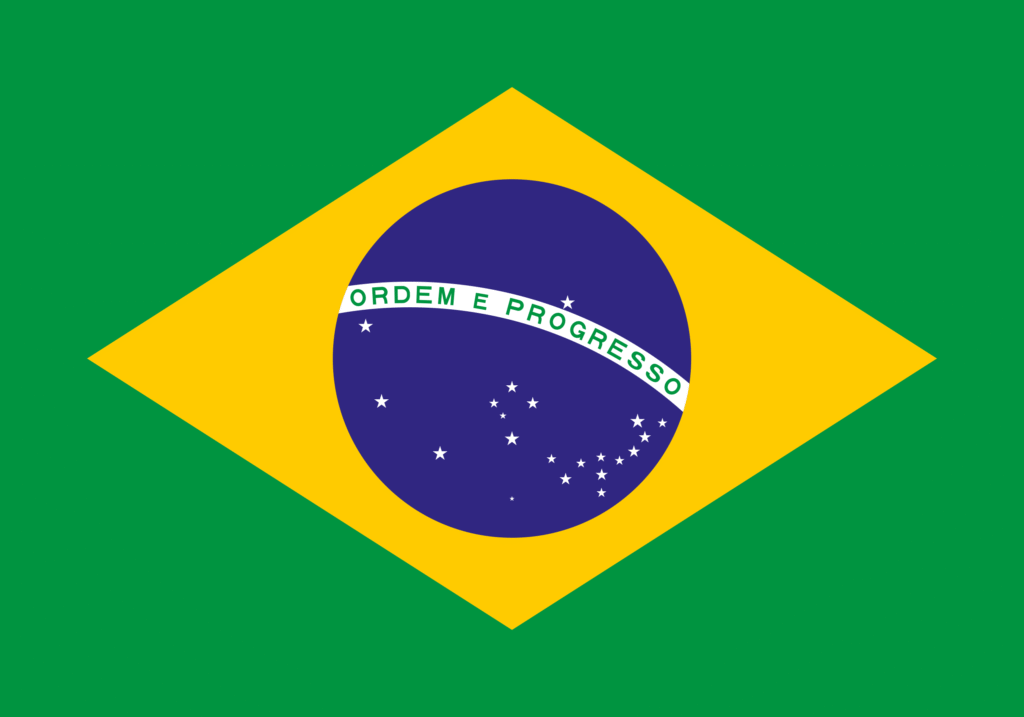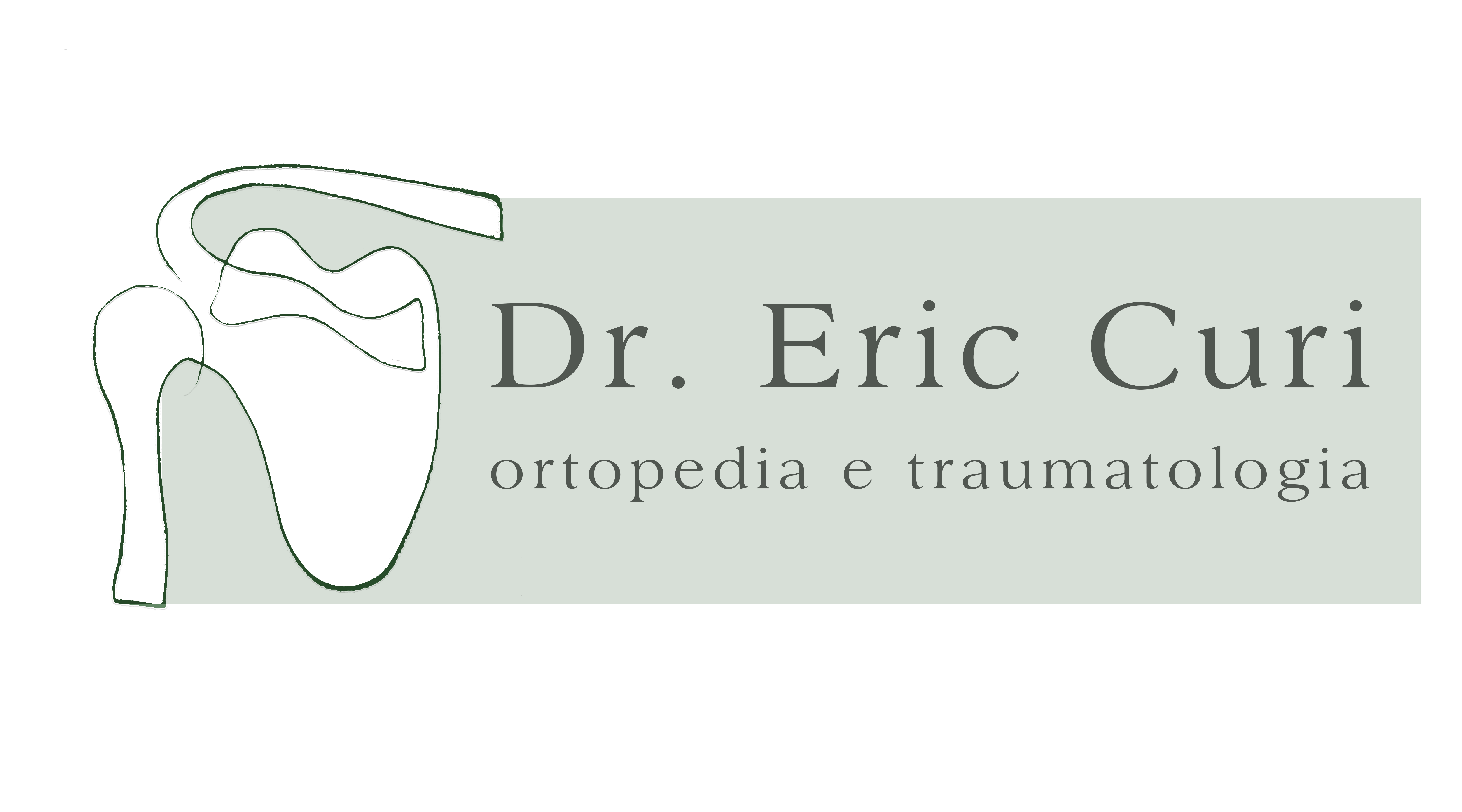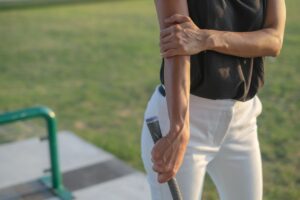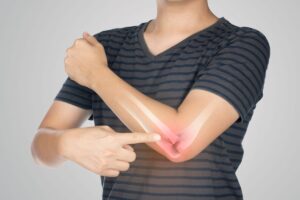Meet Dr. Eric Curi, Orthopedic Surgeon and Traumatologist, specialist in Shoulder and Elbow surgery in São Paulo.
Acromioclavicular (AC) dislocation
Shoulder Pathologies
Elbow Pathologies
General Orthopedics
Last news
Acromioclavicular (AC) dislocation is an injury that affects the shoulder, specifically the joint between the clavicle and the acromion, a distinct part of the scapula. This condition is usually caused by falls onto the shoulder and is especially prevalent in contact sports.
Given the importance of this joint for shoulder mobility and function, understanding its causes and the available treatment options is crucial. With the right approach, it is possible to restore joint integrity and function, ensuring that patients can safely and comfortably return to their daily activities.
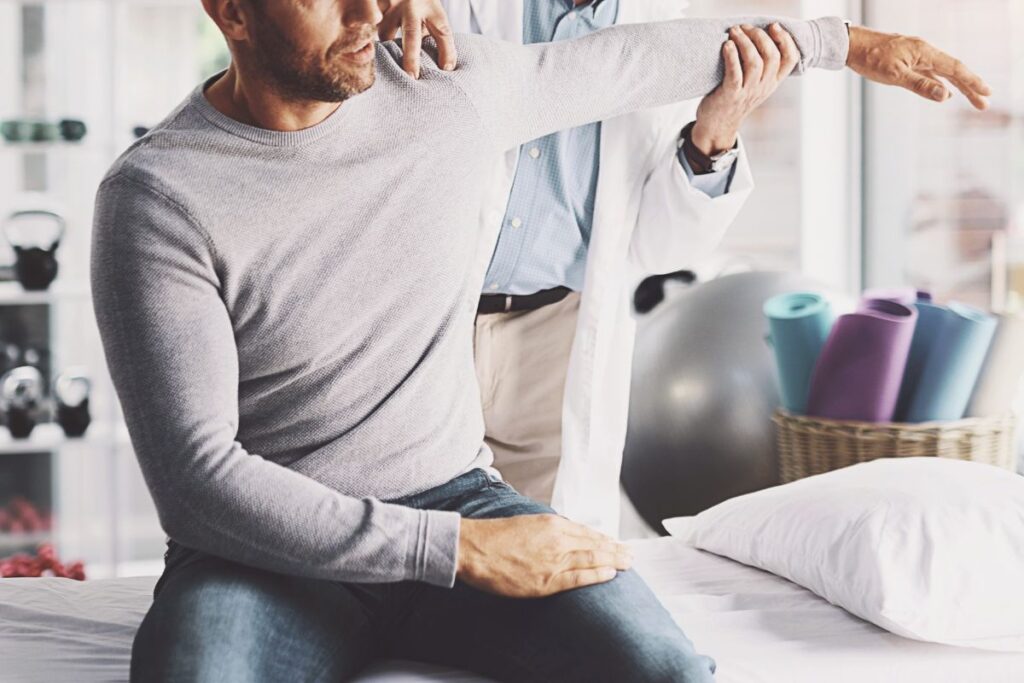
What is Acromioclavicular Dislocation and Why Does It Occur?
Acromioclavicular dislocation is an injury that occurs in the AC joint, located at the top of the shoulder where the clavicle meets the acromion, a part of the scapula. This joint is vital for shoulder mechanics and is the only true connection between the upper limbs and the rest of the skeleton.
The injury generally results from direct trauma to the shoulder region. The most common causes include falls onto the shoulder, which frequently occur in contact sports such as football, rugby, judo, cycling, and skateboarding, among others. Additionally, indirect impacts, such as a blow or a fall that transmits significant force through an outstretched arm, can also cause dislocation.
A dislocation, as discussed in other #OrthopedicTuesday texts and videos, is a serious trauma that results in the loss of joint congruence. In an AC dislocation, the ligaments stabilizing the AC joint have been injured to varying degrees. As you can imagine, quantifying the severity of the injury is essential for treatment planning, prognosis, and rehabilitation.
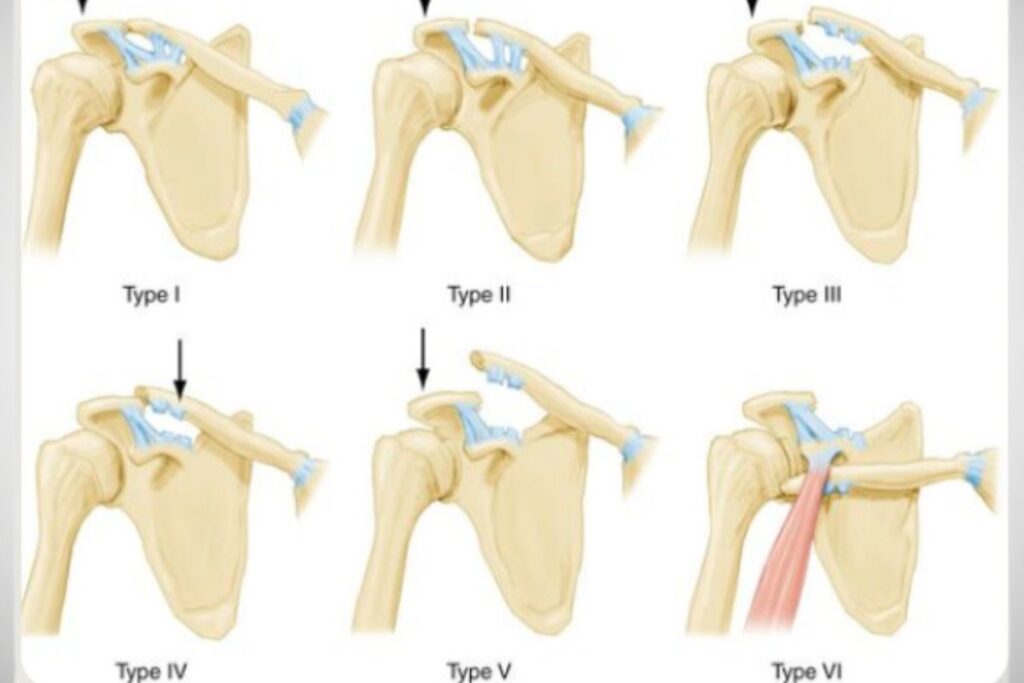
Rockwood Classification for Acromioclavicular Dislocation
Milder injuries affect only the ligaments between the acromion and the clavicle and are classified as Type I or II. More severe cases also involve the ligaments between the coracoid process—a different part of the scapula—and the clavicle, classified as Type III, IV, or V. Type VI is an extremely rare and distinct case.
In general, Grade I or II AC dislocations are treated conservatively, while Grade IV or V cases require surgical treatment. Grade III cases are individualized, and treatment can be either conservative or surgical.
What Are the Symptoms of Acromioclavicular Dislocation?
Symptoms of AC dislocation may include:
- Pain: The most common symptom is intense pain localized near the AC joint, which is easily palpable. The pain may worsen with arm movements or when touching the affected area.
- Swelling and tenderness: The region around the AC joint often presents with swelling and is highly sensitive to touch.
- Visible deformity: In more advanced cases, a visible deformity occurs due to the relative elevation of the clavicle compared to the acromion (although mechanically, it is the acromion that moves downward).
- Limited movement: The affected individual often experiences a reduced ability to move the shoulder and arm due to pain and mechanical damage to the joint.
- Crepitus: In some cases, a grinding or popping sound may be felt or heard when moving the shoulder, indicating abnormal bone friction and/or associated fractures.
- Pain when carrying weight: The pain may worsen when lifting objects or exerting force with the affected arm.
It is important to note that these symptoms can range from mild to severe, depending on the degree of dislocation and the extent of structural damage in the patient.
How Is AC Dislocation Diagnosed?
Diagnosing AC dislocation is based on clinical history, physical examination, and imaging tests, with X-rays being the primary method.
Patients typically describe a trauma involving a fall onto the shoulder. The physical examination often reveals asymmetry of the AC joint compared to the contralateral side. During the physical examination, it is essential to rule out potentially severe associated injuries such as skin wounds, open fractures, vascular damage, or neurological injuries.
After forming a clinical suspicion based on history and examination, imaging tests are requested to confirm the diagnosis and classify the injury’s severity. The primary imaging tool is X-ray in different projections, which is essential for visualizing the displacement of the clavicle relative to the acromion.
In cases requiring a more detailed analysis of the bone structures and soft tissues, such as ligaments and muscles, we may also request a CT scan and/or MRI. These tests are particularly useful for complex injuries or when considering surgical intervention.
With all this information, we can make an accurate diagnosis of AC dislocation and determine the best treatment approach.
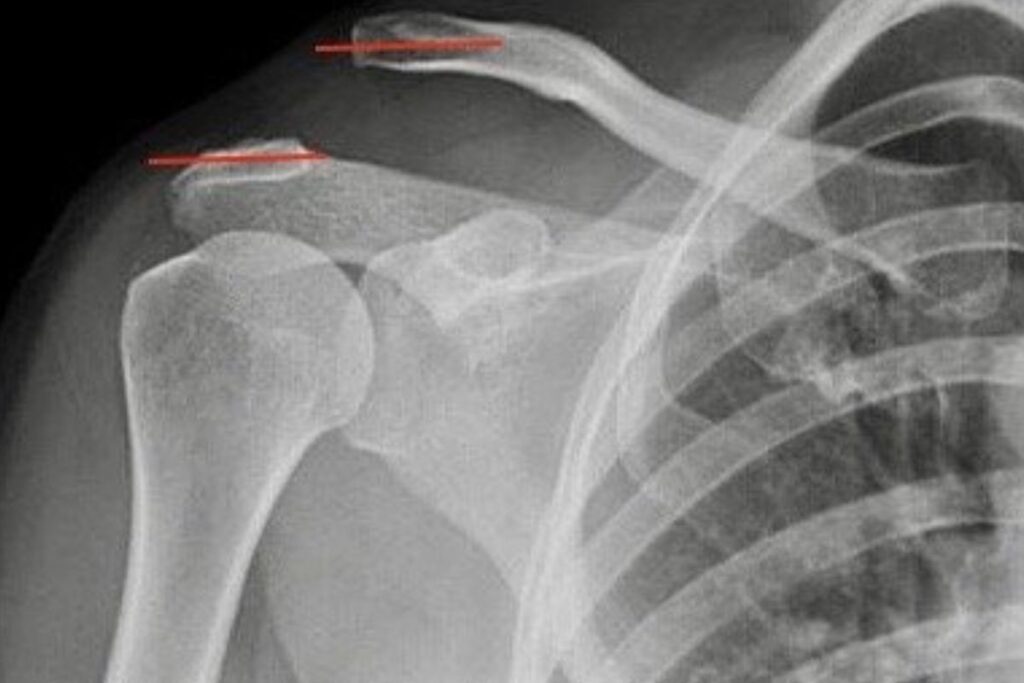
What Are the Treatment Options for This Condition?
After diagnosing and assessing the severity of the injury, treatment may be either conservative or surgical.
Conservative Treatment
In conservative treatment, the patient’s shoulder is immobilized, usually with a sling, to keep the shoulder stable and relaxed, allowing the injured ligaments to begin healing. The duration of immobilization depends on the severity of the injury and may range from a few days to several weeks.
Following the immobilization phase, rehabilitation is essential. Physical therapy aims to restore joint range of motion and strengthen the shoulder-stabilizing muscles. Exercises are introduced progressively to avoid overloading the recovering joint. Additionally, a significant part of rehabilitation includes specific training focused on body awareness and posture.
These training exercises are important not only for recovery but also for minimizing the risk of future injuries and optimizing shoulder function in daily and sports activities.
Surgical Treatment
Surgery is indicated for AC dislocation when conservative treatment is insufficient to restore shoulder function, which applies to more severe injuries.
The decision for surgical treatment takes into account various factors, including the extent of the injury (which ligaments are affected), the patient’s level of activity, pre-existing conditions (comorbidities), age, and life expectancy.
The surgery aims to reposition the acromioclavicular joint, restoring its proper anatomical alignment and congruence. Depending on the case, the procedure can be performed through open surgery or arthroscopy.
In most cases, surgical outcomes are highly positive, especially if the surgery is performed during the acute phase of the injury. However, we emphasize that for successful treatment, it is essential to have a qualified and experienced orthopedic specialist guiding the entire treatment and recovery process for AC dislocation.
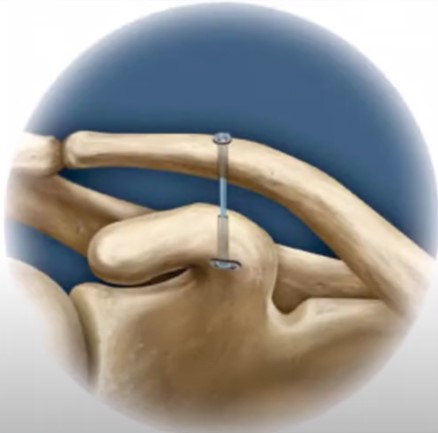
Dr. Eric Curi, with his extensive experience and specialization in orthopedics, is available to evaluate, diagnose, and treat acromioclavicular injuries. If you or someone you know is experiencing symptoms or concerns related to this condition, contact us as soon as possible to schedule an appointment!
Want to Learn More? Schedule a Consultation with Dr. Eric Curi.
Vila Olímpia
SARTOR - Medicina Integrada
- (11) 3045-2090
- Rua Helena, 218 - Trade Tower - 4º Andar
- Segunda - Sexta : 09:00 -18:00
